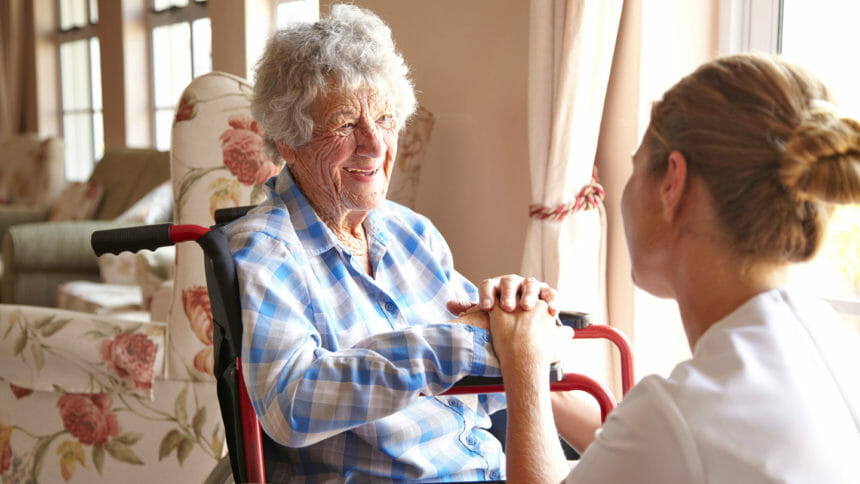Nursing home residents receiving psychosocial treatments for depression have almost six times the risk of falling compared to residents not receiving treatment, according to a new study.
While previous research has linked fall risk to seniors who have depression, data on falls as an adverse event of psychosocial depression treatments — which include group, personal and cognitive behavioral therapies — was lacking, the study’s authors said.
The University of Louisville-based research team compared data from 82 nursing home residents with depression hailing from 23 facilities in Kentucky and Indiana. The residents were split into two groups: one with 42 residents that received depression treatments and a 40-resident control group.
Results of the study determined the group that received therapy interventions was almost six times as likely to fall than those in the control group. Although residents in both group shared risk factors like chronic illnesses, functional impairment and antidepressant medications, the psychosocial treatment group still had “a significantly higher rate of falls,” the researchers said.
“In terms of clinical practice, it may be important for mental health practitioners to consider risk of falls during any treatment for depression, to assess regularly for safety, and to consider whether treatment for depression should be augmented by fall prevention practices,” wrote lead researcher Suzanne Meeks, Ph.D.
Results of the study appear in Contemporary Clinical Trials Communications.
In other fall-related news, falls ranked as the highest “distinctive” cause of death in Wisconsin, Minnesota and Iowa, according to research released Monday by the Pew Charitable Trust’s Stateline.
The study, which analyzed Centers for Disease Control and Prevention Data to find states that “stick out” due to high rates of certain types of death, found Wisconsin to have a 16.9% rate of fall-related deaths, nearly double the national average rate of 8.8%. Minnesota and Iowa followed with 15.4% and 13.1% fall death rates, respectively.
The Stateline research also identified states with “disproportionately lethal” rates of deaths linked to Alzheimer’s disease, infection and drug overdoses. Click here to see the full report.




